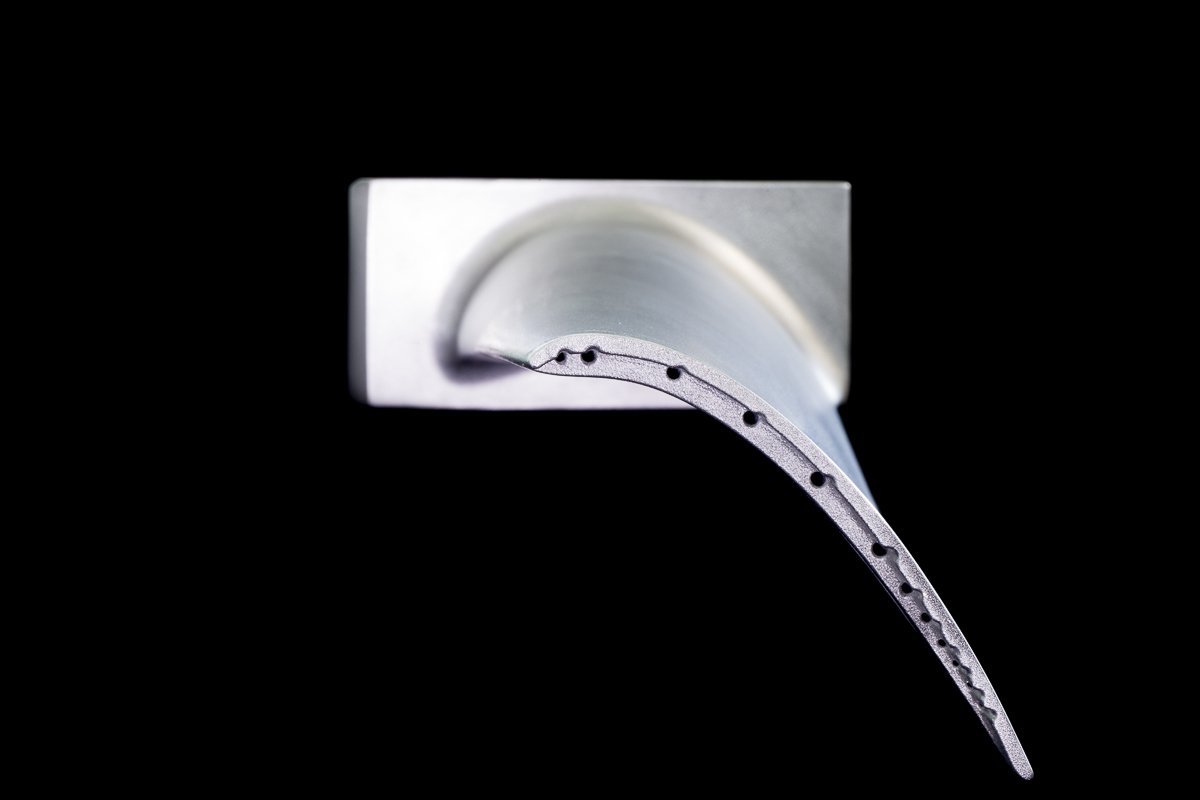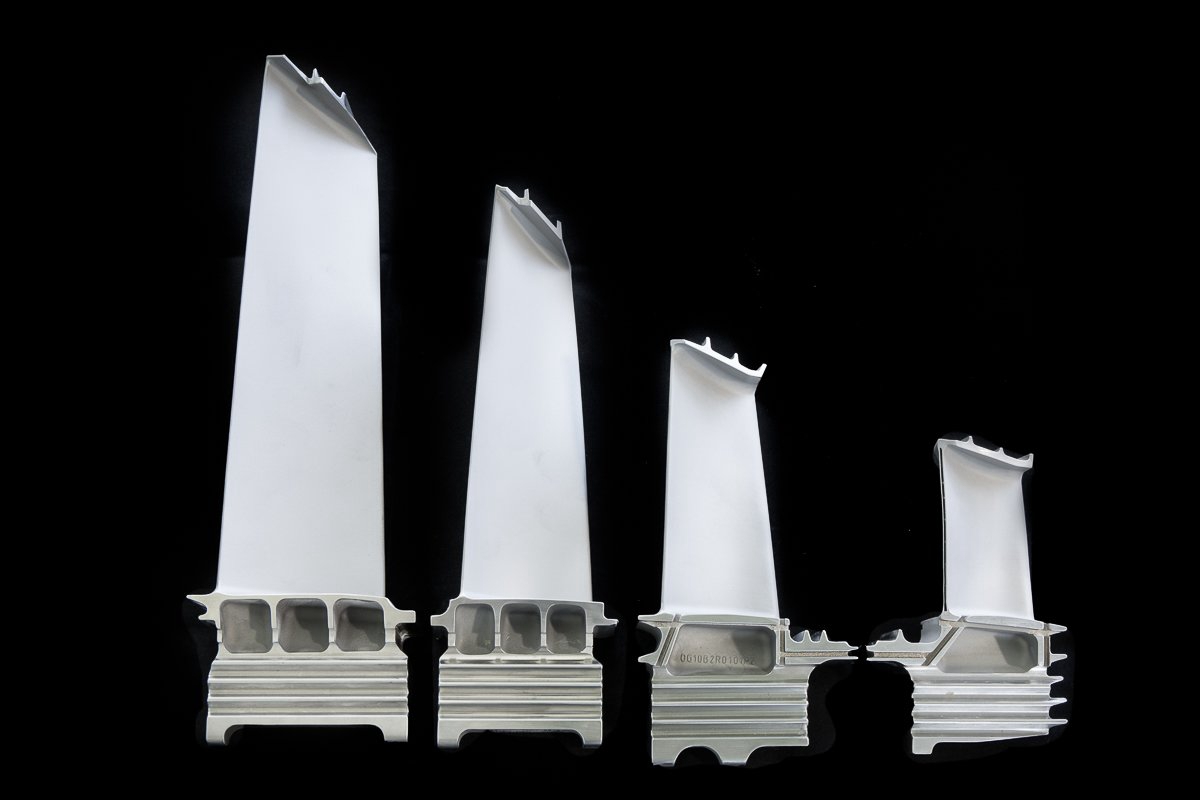Challenges Faced with Seed Crystal Casting Method
The seed crystal casting method is a cornerstone in producing high-performance single-crystal components, particularly in aerospace and power generation industries. Eliminating grain boundaries allows for creating components that demonstrate superior mechanical properties, including enhanced creep resistance, thermal fatigue resistance, and oxidation resistance. Despite its benefits, the seed crystal casting process presents unique challenges that must be addressed to achieve optimal results.
Single crystal casting relies on precise control of the crystallization process. Seed crystals play a critical role in guiding the growth of the material, ensuring the formation of a single, defect-free crystal structure. This level of precision requires advanced techniques, stringent quality controls, and meticulous process management, all of which introduce complexities and challenges.

Understanding the Seed Crystal Casting Process
Directional solidification is the primary technique used in seed crystal casting. This process involves cooling the molten material in a controlled manner to promote crystal growth in a specific orientation. A steep thermal gradient is critical for this technique, ensuring the crystal grows along the desired axis without forming grain boundaries. Innovations in directional solidification techniques have enhanced the reliability of this process, ensuring defect-free single-crystal structures.
The seed crystal serves as the foundation for the entire casting. It must be carefully selected and prepared to ensure it is free of defects that could propagate during the casting process. The material’s crystallographic orientation must also align with the desired growth direction, as any misalignment can compromise the final component's mechanical properties. Advanced single crystal casting processes utilize seeding techniques to achieve precise alignment and maintain uniformity throughout the casting.
Maintaining steady crystal growth is a significant challenge. Any fluctuation in temperature or cooling rate can result in defects such as grain boundary misalignment or the formation of unwanted secondary grains. These issues can severely impact the component's structural integrity and performance, particularly in high-stress applications like turbine engines. Manufacturers employ controlled cooling systems and technologies like vacuum investment casting to mitigate these risks, which protect the alloy during solidification and ensure superior mechanical properties.
Challenges in Seed Crystal Casting
Thermal gradient management is one of the most critical and challenging aspects of seed crystal casting. Achieving a consistent thermal gradient requires sophisticated equipment and precise control over the cooling process. Even minor temperature variations can lead to uneven cooling, resulting in structural inconsistencies. Advanced directional solidification techniques are employed to maintain these gradients and minimize the risk of defects.
Defect formation is another significant challenge. Various defects, such as porosity, inclusions, and secondary grains, can form during solidification if conditions are not tightly controlled. These defects can weaken the component, reducing its fatigue resistance and reliability. Processes like vacuum investment casting are often used to minimize contamination and prevent the formation of structural flaws.
Seed crystal contamination poses additional risks. Contaminants introduced during casting can disrupt the growth pattern, leading to structural flaws. Maintaining a clean casting environment and ensuring that all equipment and materials are impure-free are essential for successful single crystal casting. Advanced materials and practices, such as superalloy single crystal casting, help mitigate these risks by ensuring precise control over the casting environment.
Material behavior also plays a pivotal role in the success of seed crystal casting. Superalloys used in this process often exhibit complex solidification characteristics, making crystal growth challenging to control. Differences in alloy composition can influence the propensity for defect formation, requiring tailored casting parameters for each material. Innovations in superalloy casting ensure that the material's properties align with the desired performance outcomes.
Equipment limitations further complicate the process. Casting furnaces and molds must be capable of maintaining the precise conditions required for single crystal growth. Any deviation in atmospheric control, such as oxygen ingress in a vacuum environment, can lead to oxidation and other defects. To address these challenges, manufacturers often employ state-of-the-art casting systems integrated with CNC machining for post-casting precision.
Suitable Single Crystal Casting Superalloys
Several superalloys are well-suited for seed crystal casting, each offering unique advantages and challenges. The choice of material depends on the specific application and performance requirements.
Inconel Alloys
Inconel alloys, such as Inconel 718, Inconel 738, and Inconel 713, are widely used in single-crystal casting due to their excellent high-temperature strength and oxidation resistance. These alloys are particularly suitable for applications where components are exposed to extreme thermal and mechanical stresses.
CMSX Series
The CMSX series is another popular choice for single-crystal casting. Alloys such as CMSX-10 and CMSX-486 are optimized for high-performance aerospace and power generation turbine applications. These materials are engineered to provide exceptional creep resistance and fatigue strength, making them ideal for turbine blade manufacturing. However, their complex composition requires precise control during the casting process to avoid defects.
Rene Alloys
Rene alloys, including Rene 104 and Rene 88, are known for their ability to withstand extreme conditions. These alloys are designed for high-temperature applications, such as jet engines and gas turbines, where mechanical stress and thermal cycling are prevalent. The casting process for Rene alloys must be meticulously managed to ensure the formation of a defect-free single-crystal structure.
Specialized single-crystal alloys
Specialized single-crystal alloys, such as PWA 1480 and CMSX-2, are developed explicitly for single-crystal casting. These materials offer superior thermal fatigue and oxidation resistance, making them suitable for the most demanding applications. The casting process for these alloys often requires advanced equipment and techniques to achieve the desired properties.
Post-Processing Challenges
While the seed crystal casting process is critical, post-processing is equally vital in ensuring the final component meets performance standards. However, post-processing introduces its own set of challenges.
Hot Isostatic Pressing (HIP) is commonly used to eliminate porosity and improve the material's mechanical properties. However, the high pressure and temperature conditions during HIP can sometimes alter the microstructure, potentially impacting the component’s performance. To address these issues, precision HIP processes are essential for achieving defect-free bonds while maintaining material integrity.
Heat treatment is another essential post-processing step to enhance properties such as hardness, tensile strength, and creep resistance. Achieving uniform heat treatment can be challenging, particularly for large or complex components, where uneven heating or cooling can lead to residual stresses or microstructural inconsistencies. Implementing precision heat treatment ensures consistent results and optimal performance.
Thermal Barrier Coatings (TBC) are often applied to protect single-crystal components from extreme temperatures and oxidation. Applying TBC to a single crystal surface without inducing defects requires precision, as any imperfections in the coating can compromise the component’s performance. Employing advanced TBC techniques helps in extending the durability of high-temperature components.
CNC machining and deep hole drilling are critical for achieving the precise geometries and internal cooling channels required for turbine blades and other components. However, machining single-crystal superalloys can be challenging due to their hardness and brittleness. Achieving the required precision without introducing surface defects or stresses requires advanced machining techniques and tools. Leveraging EDM as a post-process can aid in achieving tight tolerances and high-quality surface finishes.
Testing Challenges for Seed Crystal Cast Components
To ensure the quality and reliability of seed crystal cast components, rigorous testing is conducted throughout the production process. However, testing single-crystal components poses unique challenges.
Non-destructive testing (NDT) techniques, such as X-ray inspection and CT scanning, are commonly used to identify internal defects. While these methods are highly effective, they may have limitations in detecting very small or deeply embedded defects, which can still impact the component’s performance. The use of non-destructive X-ray testing ensures the preservation of structural integrity without causing damage to the component.
Mechanical testing, including tensile and fatigue testing, is essential for evaluating the component’s strength and durability. Simulating operational conditions during testing can be challenging, particularly for components designed for extreme environments. Microdefects that are undetectable in initial inspections can sometimes lead to premature failures during testing. To address these challenges, dimensional accuracy verification plays a critical role in identifying discrepancies early in the process.
Electron Backscatter Diffraction (EBSD) is used to analyze grain orientation and alignment of single crystal components. While EBSD provides detailed insights into the microstructure, it requires sophisticated equipment and expertise to interpret the results accurately. Any inaccuracies in the analysis can lead to incorrect assessments of the component’s quality. Advanced methods such as high-resolution imaging using Scanning Electron Microscopy (SEM) complement EBSD by precisely visualizing surface features and microstructures.
By integrating innovative techniques like microstructural analysis and rigorous quality control processes, manufacturers can overcome these testing challenges, ensuring the reliability and performance of seed crystal cast components.
Industry Applications and Associated Challenges
Single crystal components produced using the seed crystal casting method are vital in various industries, including aerospace, power generation, and military applications. However, each industry presents unique challenges that must be addressed during the casting process.
Aerospace and Aviation
In aerospace and aviation, single crystal turbine blades are used in jet engines, which must operate under extreme temperatures and mechanical loads. Any defects in the casting process can compromise engine reliability and safety, making quality control a top priority. Aerospace and aviation applications demand precision-engineered components that meet stringent performance and safety standards.
Power Generation
In the power generation industry, gas and steam turbines rely on single-crystal components to achieve high efficiency and performance. Scaling up the seed crystal casting process for large-scale industrial applications presents challenges in maintaining consistency and quality. Power generation operations benefit from advanced casting methods to ensure the longevity and reliability of critical turbine components under continuous high-stress conditions.
Oil and Gas
The oil and gas sector demands components that can withstand high-pressure, high-temperature environments. The risk of casting defects compromising system safety and efficiency is a significant concern, necessitating stringent process controls and testing. The oil and gas industry relies on seed crystal casting to produce durable components for compressors and turbines in harsh extraction and processing environments.
Military and Defense
Military and defense applications require components with exceptional reliability and durability. The high cost and precision requirements of military-grade parts make the challenges of seed crystal casting even more pronounced. The military and defense sector depends on this advanced casting method to produce components capable of withstanding the extreme conditions of advanced weaponry and propulsion systems.
FAQs
What are the most common defects encountered during seed crystal casting, and how can they be mitigated?
How does the choice of superalloy impact the success of the seed crystal casting process?
What are the primary challenges in achieving a consistent thermal gradient during casting?
How do post-processing techniques like HIP and heat treatment address casting defects?
What testing methods are most effective for ensuring the quality of single-crystal components?




